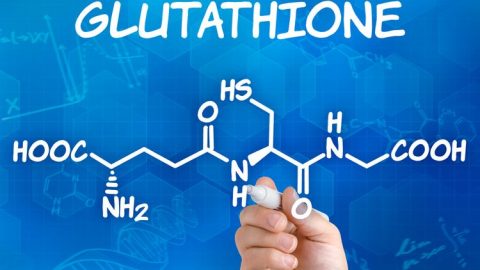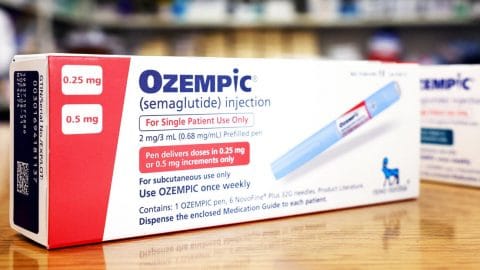
Brooke Morrisseau training
Background
Within the realm of dietary supplements, weight loss supplements are one of the most popular categories. These supplements are used in an attempt to reduce body fat, as well as increase resting metabolic rate (RMR) [1]. In the United States, more than half of the adult population is now classified as overweight or obese [2]. White adipose tissue is the main site of excess energy storage in the form of triglycerides [3, 5, 39, 40]. Recent interventions have shown that various weight loss supplements and their ingredients have favorable effects on body composition [1], target adipose tissue, suppress appetite, and increase resting metabolic rate (RMR) [3].
Recent studies have suggested that the combination of thermogenic agents in a supplement can potentially increase caloric expenditure, RMR and energy metabolism [1,3-6]. A majority of thermogenic supplements contain some combination of herbal ingredients, usually some amount of caffeine, green tea extract, and combinations of herbal extracts [7-9]. Caffeine is a central nervous system (CNS) stimulant [9,11] that enhances lipolysis and beta-oxidation [6, 9]. Weight loss supplements that don’t contain caffeine are known as non‐stimulant thermogenic agents. Non-stimulants enhance thermogenesis but don’t produce significant stimulation of the CNS [9,12]. The combination of ingredients within non-stimulant fat burners have been supported to increase RMR, speed up lipolysis through beta-oxidation, as well as reduce hunger and cravings [11].
Citrus Aurantium Fruit Extract is a derivative obtained from dried immature fruits of Citrus aurantium [12]. Citrus aurantium extracts that contain p‐Synephrine are used for weight loss, appetite control, as well as energy and mental focus [12]. p‐Synephrine enhances thermogenesis by binding to β‐3 adrenergic receptors, initiating lipolysis, which is the biochemical pathway responsible for the catabolism of triacylglycerol into fatty acids and glycerol [13-16, 30]. Naringin, a flavonoid derived from citrus grandis skin extract, has been shown to prevent low- grade inflammation [17], as well as regulate steps in carbohydrate and lipid metabolism [12]. Prior research has supported that naringin improves glucose and lipid homeostasis, and reduces adipose tissue inflammation in vivo [12,17-18], making it a desirable ingredient in many weight loss supplements.
There is increasing interest in the potential role of Epigallocatechin gallate (EGCG), a polyphenol abundant in green tea extract (GTE), in fat metabolism and weight loss [19, 20]. EGCG is a form of catechin, which is found in green tea [24]. Although the precise mechanism of GTE in the human body is unclear, there is evidence to support that the ingestion of GTE can contribute to elevated fat oxidation and total energy expenditure [3, 20, 21, 27]. Specifically, the shorter term intake of GTE has been proposed to target the sympathetic nervous system [20], increasing catecholamine concentrations that stimulate lipolysis[20-21,23, 30].
5-Hydroxy-l-tryptophan (5-HTP) is a compound produced by the amino acid tryptophan, acts as a serotonin precursor, and is derived from Griffonia simplicifolia Seeds Extract). 5-HTP has been shown to suppress appetite in response to elevated stress [24], as well as decrease total daily food intake [24-26] by altering brain serotonin-mediated functions [24]. L-Tyrosine is another ingredient found in many weight loss products due to its role in enhancing catecholamine synthesis. Tyrosine is classified as a non- essential amino acid and a precursor of catecholamine hormones, such as the neurotransmitters dopamine, epinephrine and norepinephrine [28, 29]. These hormones play an essential role in initiating the process of lipolysis and fat oxidation [30].
Salicin is a substance found in foods, such as white willow bark, that is metabolized into salicylic acid [32, 34]. The idea behind Salicin’s use in weight loss supplements is that it can be combined with other ingredients to extend their activity, as well as reduce pain and inflammation [33,36]; Salicin reduces fatty acid oxidation when taken alone [35]. Hesperidin possesses inhibitory effects against obesity [37,38] via the production of adiponectin, which in turn activates the PPARa receptor initiating fat mobilization. When combined with other ingredients that are found in weight loss supplements, such as synephrine and naringenin, metabolic rate is increased [40]. Many weight loss supplements also contain forskolin, a substance that increases intracellular concentrations of cyclic adenosine monophosphate (cAMP) by activating an enzyme that converts ATP to cAMP, known as adenylyl cyclase. Foreskolin accelerates the process of ATP production, fat oxidation [41], and improves body composition [42].
While it is supported that the combinations of these ingredients have a positive influence on body composition, RMR, appetite, and fat oxidation, the magnitude of effect can vary based on the combination of ingredients. When choosing a supplement to aid in weight loss, you need to remember total caloric intake will be the driver of weight loss. Being in a total daily negative energy balance (calorie deficit), paired with a proper training and cardio plan, will be the first step. Second to this will be supplementation, which can aid in appetite suppression, initiate lipolysis, and speed up metabolism.
Practical Application
- RMR = how many calories you burn at rest. The more muscle (lean body mass) you have, the higher this can be!
- Diet trumps supplementation. If your goal is fat loss, you need to be in a total daily negative energy balance. This can be made with total calorie intake, cardio, or a combination of both!
- 300-600 mg of caffeine per day taken in 200 mg doses can aid in fat loss.
References
- Hoffman, J. R., Kang, J., Ratamess, N. A., Rashti, S. L., Tranchina, C. P., & Faigenbaum, A. D. (2009). Thermogenic effect of an acute ingestion of a weight loss supplement. Journal of the International Society of Sports Nutrition, 6, 1. https://doi.org/10.1186/1550-2783-6-1
- Max H Pittler, Edzard Ernst, Dietary supplements for body-weight reduction: a systematic review, The American Journal of Clinical Nutrition, Volume 79, Issue 4, April 2004, Pages 529–536, https://doi.org/10.1093/ajcn/79.4.529
- Campbell, B. I., Colquhoun, R. J., Zito, G., Martinez, N., Kendall, K., Buchanan, L., Lehn, M., Johnson, M., St. Louis, C., Smith, Y., & Cloer, B. (2016). The effects of a fat loss supplement on resting metabolic rate and hemodynamic variables in resistance trained males: A randomized, double-blind, placebo-controlled, cross-over trial. Journal of the International Society of Sports Nutrition, 13. https://doi.org/10.1186/s12970-016-0125-z
- Haaz, S., Fontaine, K. R., Cutter, G., Limdi, N., Perumean-Chaney, S., & Allison, D. B. (2006). Citrus aurantium and synephrine alkaloids in the treatment of overweight and obesity: An update. Obesity Reviews: An Official Journal of the International Association for the Study of Obesity, 7(1), 79–88. https://doi.org/10.1111/j.1467-789X.2006.00195.x
- Sale, C., Harris, R. C., Delves, S., & Corbett, J. (2006). Metabolic and physiological effects of ingesting extracts of bitter orange, green tea and guarana at rest and during treadmill walking in overweight males. International Journal of Obesity (2005), 30(5), 764–773. https://doi.org/10.1038/sj.ijo.0803209
- Stohs, S. J., Preuss, H. G., Keith, S. C., Keith, P. L., Miller, H., & Kaats, G. R. (2011). Effects of p-Synephrine alone and in Combination with Selected Bioflavonoids on Resting Metabolism, Blood Pressure, Heart Rate and Self-Reported Mood Changes. International Journal of Medical Sciences, 8(4), 295–301.
- Acheson KJ, Zahorska-Markiewicz B, Pittet P, Anantharaman K, Jequier E. Caffeine and coffee: their influence on metabolic rate and substrate utilization in normal weight and obese individuals. Am J Clin Nutr. 1980; 33(5):989–97. 7.
- Dulloo AG, Duret C, Rohrer D, Girardier L, Mensi N, Fathi M, et al. Efficacy of a green tea extract rich in catechin polyphenols and caffeine in increasing 24-h energy expenditure and fat oxidation in humans. Am J Clin Nutr. 1999; 70(6):1040–5.
- Dulloo AG, Geissler CA, Horton T, Collins A, Miller DS. Normal caffeine consumption: influence on thermogenesis and daily energy expenditure in lean and postobese human volunteers. Am J Clin Nutr. 1989;49(1):44–50.
- Taylor LW, Wilborn CD, Harvey T, Wismann J, Willoughby DS. Acute effects of ingesting Java Fittrade mark energy extreme functional coffee on resting energy expenditure and hemodynamic responses in male and female coffee drinkers. J Int Soc Sports Nutr. 2007;4:10
- Supplements, P. C. for a W. on P. H. H. A. with C. of C. in F. and D., Board, F. and N., Policy, B. on H. S., & Medicine, I. of. (2014). Introduction. In Caffeine in Food and Dietary Supplements: Examining Safety: Workshop Summary. National Academies Press (US). https://www.ncbi.nlm.nih.gov/books/NBK202233/
- Haaz S, Fontaine KR, Cutter G, Limdi N, Perumean-Chaney S, Allison DB. Citrus aurantium and synephrine alkaloids in the treatment of overweight and obesity: an update. Obes Rev. 2006 Feb;7(1):79-88. doi: 10.1111/j.1467-789X.2006.00195.x. PMID: 16436104.
- Lass, A., Zimmermann, R., Oberer, M., & Zechner, R. (2011). Lipolysis – A highly regulated multi-enzyme complex mediates the catabolism of cellular fat stores. Progress in Lipid Research, 50(1–4), 14–27. https://doi.org/10.1016/j.plipres.2010.10.004
- Carpene’ C, Galitzky J, Fontana E, Algie C, Lafontan M, Berlan M. 1999. Selective activation of beta3‐adrenoreceptors by octopamine: comparative studies in mammalian fat cells. Naunyn Schmiedebergs Arch Pharmacol 359: 310–321.
- Carpene’ MA, Testar X, Carpene’ C. 2014. High doses of synephrine and octopamine activate lipolysis in human adipocytes, indicating that amines from Citrus might influence adiposity. In: Citrus. K. Hayat, Editor. Nova Science Publishers Inc. Chapter 8, pp.141‐168. Trends Endocrinol Metab 26: 238–237
- Mercader J, Wanecq E, Chen J, Carpene’ C. 2011. Isopropylnorsynephrine is a stronger lipolytic agent in human adipocytes than synephrine and other amines present in Citrus aurantium . J Physiol Biochem 67: 442–452.
- Alam, M. A., Subhan, N., Rahman, M. M., Uddin, S. J., Reza, H. M., & Sarker, S. D. (2014). Effect of Citrus Flavonoids, Naringin and Naringenin, on Metabolic Syndrome and Their Mechanisms of Action12. Advances in Nutrition, 5(4), 404–417. https://doi.org/10.3945/an.113.005603
- Mulvihill EE, Assini JM, Sutherland BG, DiMattia AS, Khami M, Koppes JB, Sawyez CG, Whitman SC, Huff MW. Naringenin decreases progression of atherosclerosis by improving dyslipidemia in high-fat–fed low-density lipoprotein receptor–null mice. Arterioscler Thromb Vasc Biol 2010;30:742–8
- Hodgson, A. B., Randell, R. K., & Jeukendrup, A. E. (2013). The Effect of Green Tea Extract on Fat Oxidation at Rest and during Exercise: Evidence of Efficacy and Proposed Mechanisms1. Advances in Nutrition, 4(2), 129–140. https://doi.org/10.3945/an.112.003269
- Liu, J., Peng, Y., Yue, Y., Shen, P., & Park, Y. (2018). Epigallocatechin-3-Gallate Reduces Fat Accumulation in Caenorhabditis elegans. Preventive Nutrition and Food Science, 23(3), 214–219. https://doi.org/10.3746/pnf.2018.23.3.214
- Hursel R, Viechtbauer W, Westerterp-Plantenga MS. The effects of green tea on weight loss and weight maintenance: a meta-analysis. Int J Obes (Lond). 2009;33:956–61
- Kevin C. Maki, Matthew S. Reeves, Mildred Farmer, Koichi Yasunaga, Noboru Matsuo, Yoshihisa Katsuragi, Masanori Komikado, Ichiro Tokimitsu, Donna Wilder, Franz Jones, Jeffrey B. Blumberg, Yolanda Cartwright, Green Tea Catechin Consumption Enhances Exercise-Induced Abdominal Fat Loss in Overweight and Obese Adults, The Journal of Nutrition, Volume 139, Issue 2, February 2009, Pages 264–270,
- Dulloo AG, Seydoux J, Girardier L, Chantre P, Vandermander J. Green tea and thermogenesis: interactions between catechin-polyphenols, caffeine and sympathetic activity. Int J Obes Relat Metab Disord. 2000;24:252–8
- Amer, A., Breu, J., McDermott, J., Wurtman, R. J., & Maher, T. J. (2004). 5-Hydroxy-l-tryptophan suppresses food intake in food-deprived and stressed rats. Pharmacology Biochemistry and Behavior, 77(1), 137–143. https://doi.org/10.1016/j.pbb.2003.10.011
- Ju CY, Tsai CT. Serotonergic mechanisms involved in the suppression of feeding by 5-HTP in rats. Chin J Physiol 1995;38:235 – 40.
- Ceci F, Cairella M, Cascino A, Del Ben M, Muscaritoli M, Sibilia L, et al. The effects of oral 5-hydroxytryptophan administration on feeding behavior in obese adult female subjects. J Neural Transm 1989;76:109 – 17.
- Dulloo AG, Duret C, Rohrer D, Girardier L, Mensi N, Fathi M, et al. Efficacy of a green tea extract rich in catechin polyphenols and caffeine in increasing 24-h energy expenditure and fat oxidation in humans. Am J Clin Nutr. 1999;70(6):1040–5.
- Agharanya JC, Alonso R, Wurtman RJ. Changes in catecholamine excretion after short-term tyrosine ingestion in normally fed human subjects. Am J Clin Nutr 1981 Jan;34(1):82-7
- D. D. RASMUSSEN, B. ISHIZUKA, M. E. QUIGLEY, S. S. C. YEN, Effects of Tyrosine and Tryptophan Ingestion on Plasma Catecholamine and 3,4-Dihydroxyphenylacetic Acid Concentrations, The Journal of Clinical Endocrinology & Metabolism, Volume 57, Issue 4, 1 October 1983, Pages 760–763, https://doi.org/10.1210/jcem-57-4-760
- Duncan, R. E., Ahmadian, M., Jaworski, K., Sarkadi-Nagy, E., & Sul, H. S. (2007). Regulation of Lipolysis in Adipocytes. Annual Review of Nutrition, 27, 79–101. https://doi.org/10.1146/annurev.nutr.27.061406.093734
- Shara M, Stohs SJ. Efficacy and Safety of White Willow Bark (Salix alba) Extracts. Phytother Res. 2015 Aug;29(8):1112-6. doi: 10.1002/ptr.5377. Epub 2015 May 22. PMID: 25997859.
- Deschamps, D., Fisch, C., Fromenty, B., Berson, A., Degott, C., & Pessayre, D. (1991). Inhibition by salicylic acid of the activation and thus oxidation of long chain fatty acids. Possible role in the development of Reye’s syndrome. The Journal of Pharmacology and Experimental Therapeutics, 259(2), 894–904.
- Liu, J., Peng, Y., Yue, Y., Shen, P., & Park, Y. (2018). Epigallocatechin-3-Gallate Reduces Fat Accumulation in Caenorhabditis elegans. Preventive Nutrition and Food Science, 23(3), 214–219. https://doi.org/10.3746/pnf.2018.23.3.214
- Yoshida, Y., Fujii, M., Brown, F. R., & Singh, I. (1988). Effect of Salicylic Acid on Mitochondrial-Peroxisomal Fatty Acid Catabolism. Pediatric Research, 23(3), 338–341. https://doi.org/10.1203/00006450-198803000-00021
- Bonaterra, G. A., Heinrich, E. U., Kelber, O., Weiser, D., Metz, J., & Kinscherf, R. (2010). Anti-inflammatory effects of the willow bark extract STW 33-I (Proaktiv®) in LPS-activated human monocytes and differentiated macrophages. Phytomedicine, 17(14), 1106–1113. https://doi.org/10.1016/j.phymed.2010.03.022
- Uppala, R., Dudiak, B., Beck, M. E., Bharathi, S. S., Zhang, Y., Stolz, D. B., & Goetzman, E. S. (2017). Aspirin Increases Mitochondrial Fatty Acid Oxidation. Biochemical and Biophysical Research Communications, 482(2), 346–351. https://doi.org/10.1016/j.bbrc.2016.11.066
- Shen, J., Nakamura, H., Fujisaki, Y., Tanida, M., Horii, Y., Fuyuki, R., Takumi, H., Shiraishi, K., Kometani, T., & Nagai, K. (2009). Effect of 4G-α-glucopyranosyl hesperidin on brown fat adipose tissue- and cutaneous-sympathetic nerve activity and peripheral body temperature. Neuroscience Letters, 461(1), 30–35. https://doi.org/10.1016/j.neulet.2009.05.067
- Xiong, H., Wang, J., Ran, Q., Lou, G., Peng, C., Gan, Q., Hu, J., Sun, J., Yao, R., & Huang, Q. (2019). Hesperidin: A Therapeutic Agent For Obesity. Drug Design, Development and Therapy, 13, 3855–3866. https://doi.org/10.2147/DDDT.S227499
- Jaitin DA, Adlung L, Thaiss CA, et al. Lipid-associated macrophages control metabolic homeostasis in a trem2-dependent manner. Cell. 2019;178(3):686–698.e614. doi:10.1016/j.cell.2019.05.054
- Xiong, H., Wang, J., Ran, Q., Lou, G., Peng, C., Gan, Q., Hu, J., Sun, J., Yao, R., & Huang, Q. (2019). Hesperidin: A Therapeutic Agent For Obesity. Drug Design, Development and Therapy, 13, 3855–3866. https://doi.org/10.2147/DDDT.S227499
- Litosch I, Hudson TH, Mills I, Li SY, Fain JN. Forskolin as an activator of cyclic AMP accumulation and lipolysis in rat adipocytes. Mol Pharmacol. 1982 Jul;22(1):109-15. PMID: 6289066.
- Godard MP, Johnson BA, Richmond SR. Body composition and hormonal adaptations associated with forskolin consumption in overweight and obese men. Obes Res. 2005 Aug;13(8):1335-43. doi: 10.1038/oby.2005.162. PMID: 16129715.

I am an athlete, lifelong student, scientist and educator. I come from a background in biochemistry, transitioning over into exercise science with specialization in weight loss and body transformation. I have served in a biochemistry laboratory studying the mechanisms of Altztimers, a physique laboratory studying metabolism and body composition, and now currently have my own weight loss and body transformation company as I look deeper into PhD programs. I enjoy the mechanisms and science of weight loss and exercise, but also practice fitness in my own life. My writing is full of science based information at its core, which is interpreted with my open mind, and then translated into applicable action points to help you.







